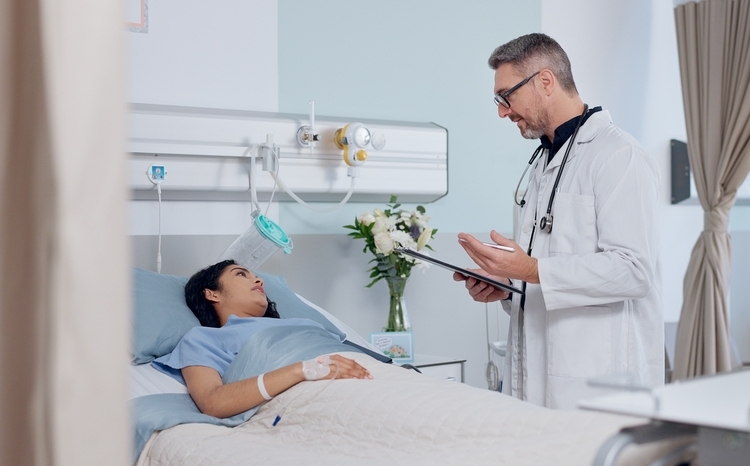Clinithink looks to mine the value of unstructured clinical text
- 2 June 2023

One of the biggest challenges accompanying the digitisation of healthcare is the amount of health information and insight embedded in the free text of clinical notes. Clinithink’s unique technology aims to extract this information and integrate it into broader records to help fill gaps in clinical care.
“Structured applications work well on phones, but in medicine, it’s all about stories,” Clinithink Co-Founder and CEO Chris Tackaberry tells Digital Health.
“Our solution exists because conventional technologies can’t do anything with that data and yet there are millions of documents, radiology reports and discharge notes that are inaccessible to conventional technology. We can extract the meaning of that content and enable value to be created.”
Clinithink’s CLiX artificial intelligence (AI) enabled technology focuses on the reams of unstructured data and free text “narrative” that clinicians type into computer notes every day and has the potential to save clinical hours and money by identifying patients needing additional care and avoiding hospital admissions.
In May, Clinithink announced a partnership with the Access Group to provide RIO, an electronic patient record (EPR) system for mental health, children’s and community health systems, encompassing more than 30 sites in the UK.
The two companies have already been working together to help the East London NHS Foundation Trust (ELFT), a mental health provider, to extract information that can help it identify vulnerable patients and ultimately control costs.
Extracting information from free text
Clinithink’s key focus is progress notes or episode of care reports that are summarised in discharge summaries or clinic letters, says Tackaberry, an anaesthesiologist who trained in the UK and also has a Master’s degree in computer science.
Its technology has been exposed to around four billion words of medical English, including both common ones and those that are less frequently seen. He notes that there are 72 different ways of saying left fractured neck of femur and many ways of interpreting an observation about whether a patient has evidence of breathlessness.
The CLiX technology can interpret text “in the presence of uncertainty, misspelling and acronyms,” Tackaberry says, and the software has been adapted for use in Spanish and Portuguese, as well as English.
Because the system only requires medical notes, the documents are generally easy to retrieve from EPRs and other databases that health systems typically use, Tackaberry says, adding that the software is “completely EPR agnostic”. The company is operating in a niche area with few other vendors working in the space.
As result of the success in ELFT, the technology is being rolled out in a number of other health trusts. In the last two years, Barts NHS Trust in London has been using Clinithink solutions to identify people at risk of worsening diabetic foot disease (DFD).
“The general principle in the population health context is very exciting because, taking the diabetic foot example, information that tells vascular surgeons and podiatrists about at-risk people is not available in structured data, it is in narrative form,” Tackaberry adds.
The company is working on other specific applications for trusts in the Midlands, Herefordshire and Worcestershire.
Clinithink is now looking to move from identifying those patients who meet certain criteria that is only described in free text to finding patients who are more widely high risk or vulnerable. In addition to preventing poorer outcomes and unnecessary clinical spending, the company is working with pharmaceutical companies to identify people eligible for clinical trials.
“Using conventional machine learning to make predictions in healthcare is quite difficult compared to in other industries, but the information that might give a clue that someone might get worse is in the free text,” Tackaberry says.
“If you take information from our [technology] and put it into a machine learning stack, you can support the finding of needles in haystack for population health. “





